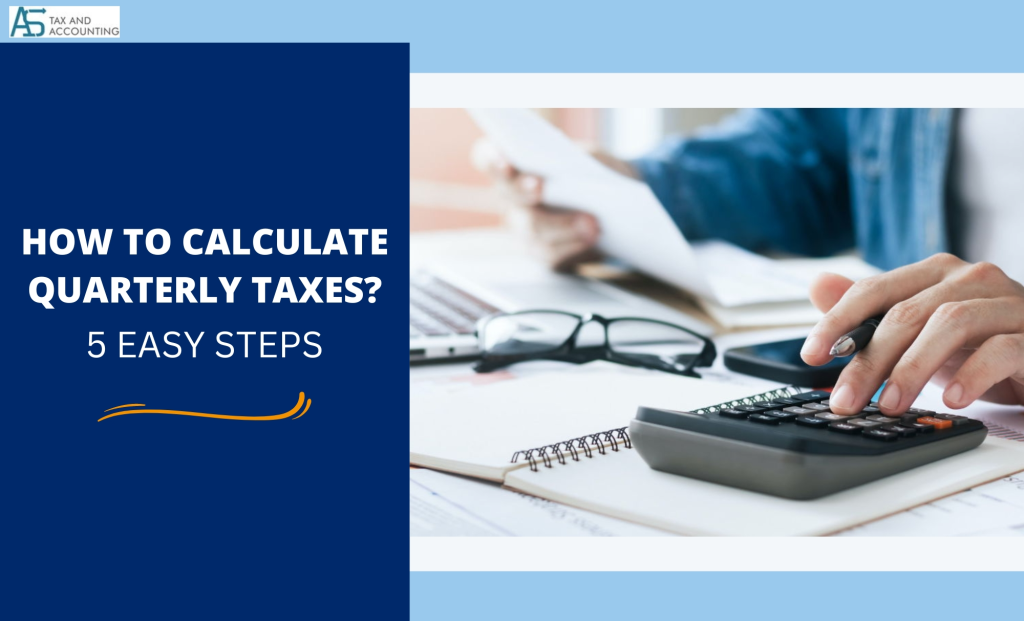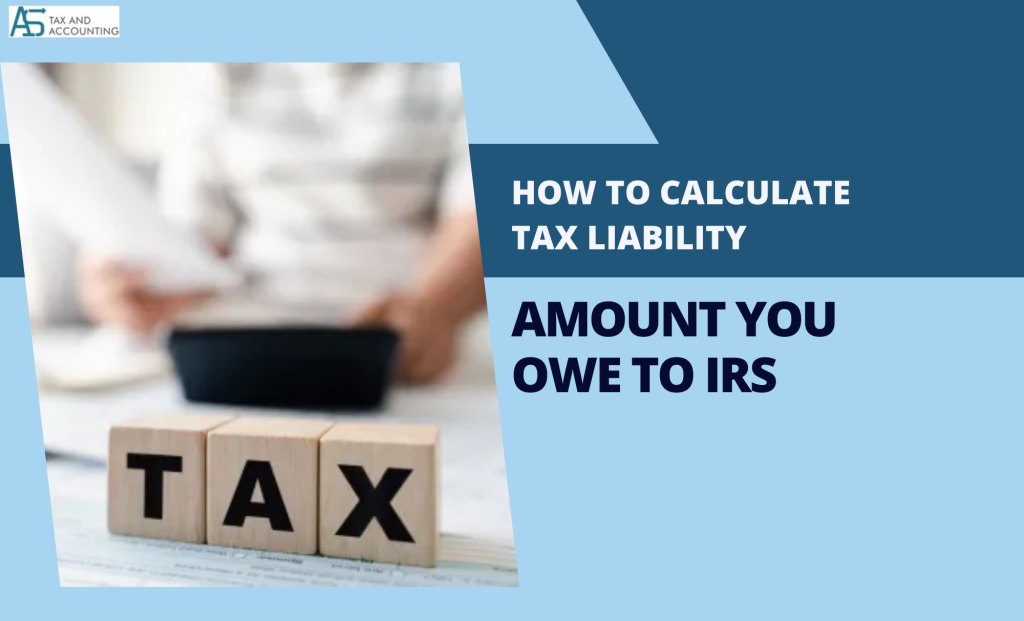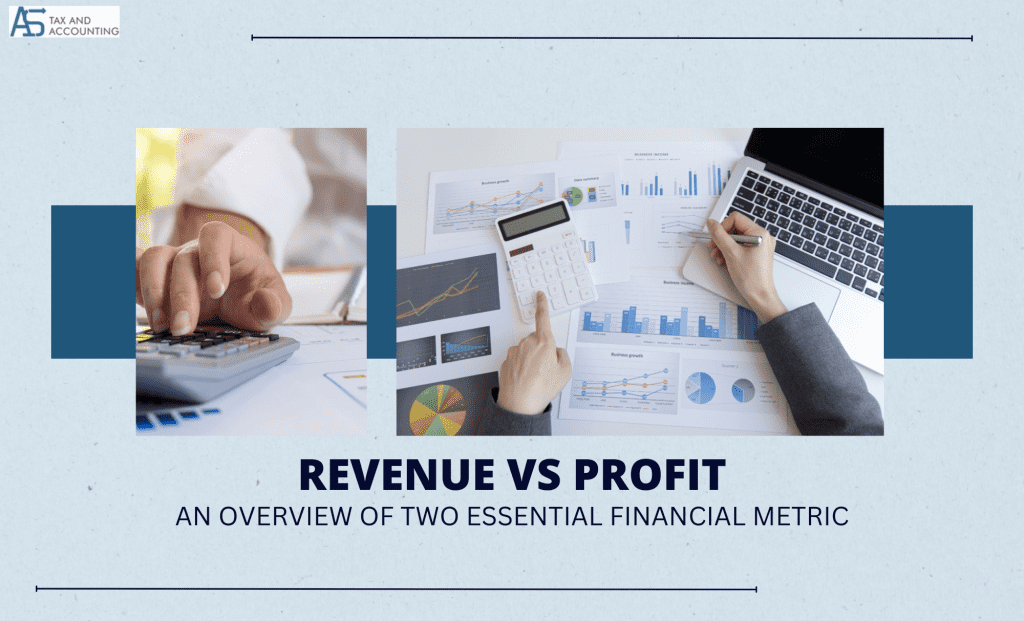You may be required to pay estimated taxes on a quarterly basis if you are self-employed or have income in addition to your compensation from work. It can be surprising for individuals to receive a charge from the IRS because they are unaware of this obligation. By comprehending your duties with quarterly estimated taxes, including what they are and when to pay them, you may decrease the possibility of a surprise payment during tax season or potential penalties with the IRS. So, you may be eager to know how to calculate quarterly taxes. But before that, let’s first understand the quarterly estimated taxes.
What are Quarterly Estimated Taxes?
Instead of paying them all at once at the end of the year, the “pay as you go” tax system in the United States requires you to pay income taxes as you get money. There are tax payments to the IRS during the year on income that is not subject to federal tax withholding. It is known as estimated tax payments. These payments are divided into four equal parts and made once every three months.
If you are trying to know how to calculate quarterly estimated taxes, then on the first hand, it includes profits from your own business or as a freelancer, as well as earnings from side jobs like rewards, dividends, realized capital gains, and other non-wage income.
Who Has to Pay Quarterly Taxes?
You probably owe quarterly taxes if you’re a small company owner or self-employed right now. Those who work for themselves are
- Freelancers.
- Sole proprietor.
- Participants in partnerships that run businesses, such as LLCs.
- Own business owners.
The quarterly taxes include Social Security, Medicare, and income taxes. Self-employed people and small company owners must pay these taxes individually, unlike workers who have them deducted from their paychecks by their employers. Normally, this is done by filing quarterly tax payments with the IRS.
When to Pay Quarterly Taxes?
According to IRS, you have to pay quarterly estimated taxes if
- Even after factoring in your withholding and refundable credits, you’ll still be due at least $1,000 in federal income taxes this year (such as the earned income tax credit)
- Your withholding and refundable credits will cover the lesser of 90% of your tax due for this year or 100% of your tax liability for the previous year.
- If your yearly adjusted gross income was over $150,000, or $75,000 if you’re married and filing separately, then you have to pay 110% of your previous year’s total tax.
- Companies that will owe at least $500 in income taxes for the tax year may also have to submit quarterly tax payments.
Another option is to calculate your obligation using the tax return from the prior year. If you have already paid the entire amount of taxes you owe for the previous year, you don’t need to pay any more in advance.
The following schedule governs when quarterly tax payments are due in 2023:
- Quarter 1: January 1 through March 31 – April 18 is the deadline for payment.
- Quarter 2: April 1 to May 31 – June 15 is the payment deadline.
- Quarter 3: June 1 to August 31 – Payment is due on September 15.
- Quarter 4: September 1 to December 31 – January 16, 2024, is the payment deadline.
Farmers and Fishermen are Exceptions
Farmers and fishermen are exempt from making quarterly tax payments. There is just one payment deadline for calendar-year taxpayers who earn at least two-thirds of their 2022 gross income from farming or fishing, which is January 17, 2023.
Calendar-year taxpayers who submit their 2022 Form 1040 by March 1, 2023, are exempt from making an anticipated tax payment if they pay all of their owing tax at that time, according to the IRS.
How to Calculate Quarterly Taxes – Quick Steps
You can compute your payments in five simple stages and the computations aren’t at all difficult.
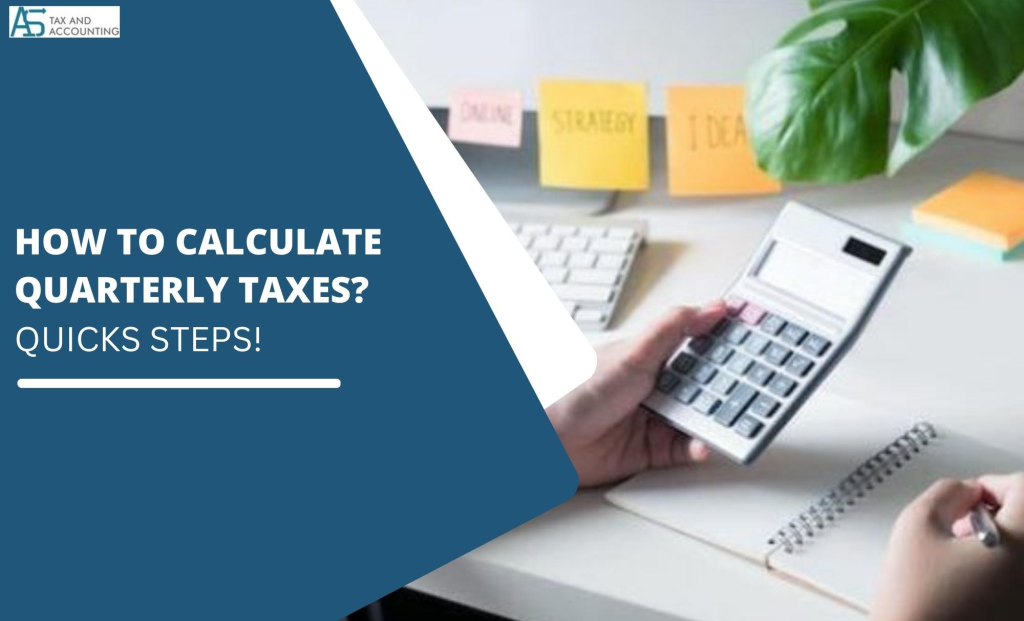
Step 1: Calculate Your Taxable Income
Estimate how much money you plan to make in a year. You can use last year’s gross revenue as a reference if you’re unsure. It is the easiest way to calculate it. However, if you have a fluctuating income, then you have to estimate quarterly taxes.
Step 2: Calculate Your Income Tax
Now that you know the percentage of your income subject to taxation, you must determine the amount of tax you will need to pay. You must determine your tax rate (depending on your income) according to the tax brackets provided by the IRS.
Step 3: Determine Self-Employment Tax
Another step in calculating estimated tax payments. Self-employment tax may be due in addition to other taxes if you are self-employed. The Social Security and Medicare taxes that would typically be deducted from your paycheck if you were an employee are included in this amount. You must pay this tax if your annual income is greater than $400.
Remember that self-employment tax is different from income tax. But, to avoid any late payment penalties, you could think about making quarterly tax payments rather than waiting for your yearly tax return.
Step 4: Sum Up Self-Employment and Income Tax
In the next step, you should add up the self-employment and income tax. In our quest of how to calculate quarterly taxes, at this point, you might be wondering what to do regarding tax deductions. The IRS regrettably forbids you from taking any deductions from your quarterly tax projections. Instead, you may anticipate making these deductions after your annual taxes are filed.
Step 5: Figure Out the Quarterly Taxes
Now, divide the sum by four to find out the quarterly taxes. The number will be your quarterly estimated taxes.
Necessary Forms
You must use the applicable tax form to compute your estimated taxes correctly and submit them to the IRS:
- Use of IRS Form 1040-ES is required for individual filers, including partners or sole proprietors.
- To calculate estimated taxes, nonresident aliens utilize Form 1040-ES.
To correctly calculate your anticipated tax due for the quarter, follow the thorough instructions in each form. Estimated tax can be calculated using the worksheet in Form 1040-ES. If you overestimate your quarterly taxes, recalculate your tax and complete another Form 1040-ES. Similarly, fill out another Form 1040-ES worksheet to compute your estimated tax for the next quarter if you understated your earnings.
It is important to consult a seasoned quarterly tax preparer if you are uncomfortable filling out the paperwork to avoid needless fines for underpayment.
How to Pay Quarterly Estimated Taxes?
The IRS provides a number of simple payment alternatives so that you may pay your tax obligations, whichever suits you best. You can use any of them to send in your quarterly taxes on time:
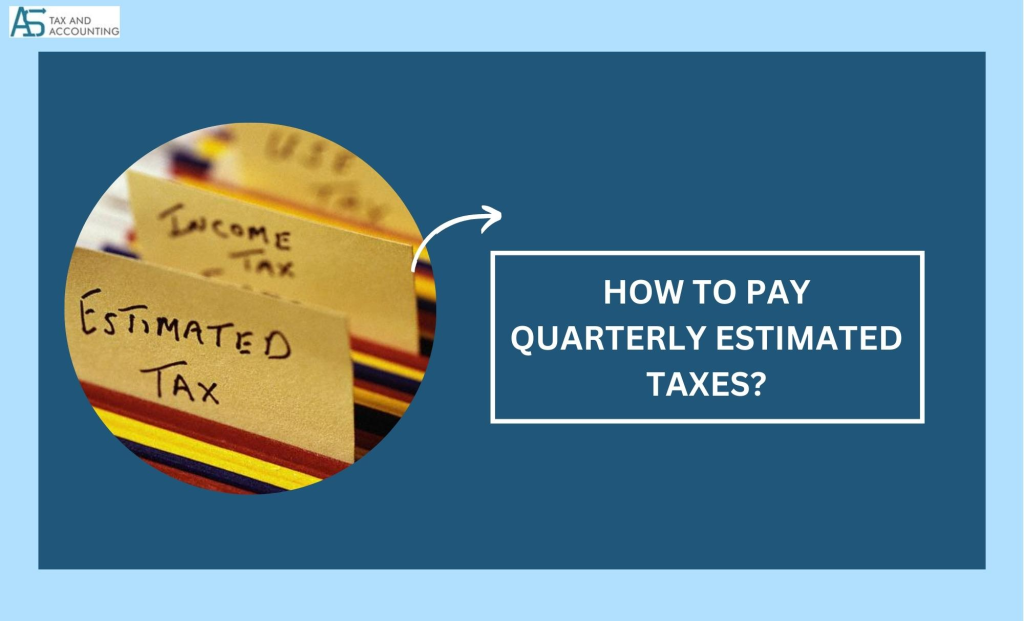
- Through online IRS account.
- IRS Direct Pay.
- Also, the IRS2Go app.
- Also, by using a debit or credit card.
- Through the U.S. Treasury’s Electronic Federal Tax Payment System.
- Make cash payments at specific IRS retail partners.
The IRS strongly advises taxpayers to think about electronic means of payment, but you can submit your due tax payments together with IRS Form 1040-ES using a payment voucher.
For both individuals and corporations, using the Electronic Federal Tax Payment System (EFTPS) is the simplest method of paying federal taxes. You can see Publication 505, Tax Withholding and Estimated Tax, for further details.
What Happens If You Miss Quarterly Tax Payments?
As we know, the American tax system uses a pay-as-you-go income tax method. With a system like this, taxpayers pay as they make money. Hence, the government has the option of withholding taxes from W-2 workers and quarterly tax payments from self-employed people.
There will be penalties if you don’t pay enough tax all year long or if you forget to pay your taxes on time once a quarter. The usual rule is that 90% of your tax obligation must be settled by withholding or timely quarterly estimated tax payments throughout each fiscal or calendar year. Otherwise, there will be an imposition of penalties.
The penalty will increase in proportion to how long you go without paying. It also depends on how much tax you owe. The IRS normally assesses a late fee of 0.5% of the entire amount owed. The fine rises each month that your payment is late, with a 25% fine being the maximum.
Related Post
- How to Calculate Tax Liability?
- How to Find Net Income
- How to File Back Taxes with and Without Records?
Frequently Asked Questions
You can pay your quarterly tax payments together with Form 1040-ES by mail, or you can use the IRS2Go app on your mobile device to pay online, over the phone, or from your device. You can also use Electronic Federal Tax Payment System (EFTPS).
Yes, you probably have to make quarterly tax payments if you operate a business as a single proprietor, an independent contractor, or a partner in a partnership that transacts business. However, your income should be higher than $1000.
Individuals use the estimated tax technique to pay income taxes on funds that aren’t subject to withholding taxes. A quarterly payment is required if you owe an estimated tax.
The estimated tax covers income and self-employment taxes.
Here are quick steps.
1. Calculate your quarterly tax liability.
2. Complete the appropriate 1040 IRS form for estimating your tax liability.
3. Submit your quarterly taxes using official IRS payment methods.
4. Save a copy of every payment you make.
- Author Details
- Latest Posts

I am Billie wilson, a financial analyst who loves to share knowledge. I believe that everyone deserves the opportunity to succeed and so I guide people in their journey to financial growth

